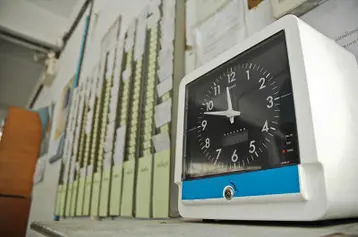Paycheck Protection Program Flexibility Act: Update for Small and Medium-Size Businesses

Table of contents
- 1.What Does the Paycheck Protection Program Flexibility Act Change?
- 2.The Covered Period:
- 3.Loan Application Deadline:
- 4.Maintenance of FTEs and Wages:
- 5.New FTE Reduction Factor Exemption:
- 6.Reduction in 75% Payroll Cost Requirement:
- 7.Extension of Loan Deferral Period:
- 8.Extension of PPP Loan Maturity Date:
- 9.Expansion of the CARES Act Employment Tax Deferral Provision:
In the face of an unprecedented public health emergency, the U.S. government launched Paycheck Protection Program (PPP)as part of the CARES Act, to help businesses cover payroll and other expenses. On Friday June 5, 2020, President Trump signed the Paycheck Protection Program Flexibility Act (Flexibility Act) which will implement substantial changes to the Paycheck Protection Program.
We have been following and updating you on the latest guidance on PPP as issued by Small Business Administration (SBA) through our blog and our recent webinar series. And now we provide you with the summary of the Flexibility Act below that will help you pivot and adjust as necessary.
What Does the Paycheck Protection Program Flexibility Act Change?
The Covered Period:
The period during which PPP loan funds may be used is extended from eight weeks to 24 weeks after the disbursement of the PPP loan, or up until December 31, 2020, whichever period ends earlier. Borrowers who received a PPP loan before the enactment of the Flexibility Act may elect to use an eight-week forgiveness period. This means that borrowers will have more time to spend loan proceeds and restore headcount and wages.
Loan Application Deadline:
The SBA and Treasury have issued a joint statement indicating that new rules will confirm that June 30,2020 remains the last date on which a PPP loan application can be approved.
Maintenance of FTEs and Wages:
The Flexibility Act amends the CARES Act to provide that under the FTE Reduction Safe Harbor and the Salary/Hourly Wage Reduction Safe Harbor any reduction in the amount of loan forgiveness is avoided if the employer restores headcount or increases their previously reduced wages no later than December 31, 2020.
New FTE Reduction Factor Exemption:
The Flexibility Act creates an additional exemption to the reduction-in-loan forgiveness with respect to maintaining FTE headcount. The exemption states that the amount of loan forgiveness will be determined “without regard to a proportional reduction in the number of full-time equivalent employees” if the borrower, in good faith:
- Can document an inability to rehire individuals who were employees of the eligible recipient on February 15, 2020 and an inability to hire similarly qualified employees for unfilled positions on or before December 31, 2020; or
- Can document an inability to return to the same level of business activity as the borrower was operating at before February 15, 2020, due to compliance with requirements established or guidance issued by the Secretary of Health and Human Services, the Director of the Centers for Disease Control and Prevention, or the Occupational Safety and Health Administration during the period between March 1, 2020 and December 31, 2020, related to the maintenance of standards for sanitation, social distancing, or any other worker or customer safety requirement related to COVID-19.
These exemptions are important for businesses that have been unable to maintain headcount and return to full operation because of restrictions on customer capacity or similar reopening restrictions.
Reduction in 75% Payroll Cost Requirement:
The Flexibility Act amends the guidance issued by the Small Business Administration (SBA) and Treasury Department to require that borrowers shall use at least 60% (previously 75%) of the PPP loan amount for payroll costs, and may use up to 40%(previously 25%) of the PPP loan amount for non-payroll costs (rent, mortgage interest, and utilities).
Extension of Loan Deferral Period:
Under the Flexibility Act, payment of principal, interest, and fees are deferred until the date that the amount of forgiveness is remitted to the lender. Borrowers must submit applications for forgiveness within ten months after the last day of the covered forgiveness period.
Extension of PPP Loan Maturity Date:
A loan that has a balance after forgiveness will have a minimum maturity date of 5 years and a maximum maturity date of 10 years from the date on which the borrower applies for loan forgiveness. This applies only to loans made after the Flexibility Act was signed into law.
Expansion of the CARES Act Employment Tax Deferral Provision:
Employers who receive loan forgiveness may continue to defer deposit and payment of the employer’s share of the Social Security taxes under the CARES Act. Previously, the deferral was no longer available once the borrower’s loan was forgiven.
There is certainly good news for employers under the new Paycheck Protection Flexibility Act. The SBA will issue a new PPP loan application and new guidance. Employers should consider waiting to apply for loan forgiveness. If you have applied for forgiveness reach out to your bank.
Visit the TriNet COVID-19 Preparedness Center for critical and up-to-date information as well as the impact of changing regulations on small and medium-size businesses. We will continue to monitor the COVID-19 situation and provide updates as necessary
This communication is for informational purposes only; it is not legal, tax or accounting advice; and is not an offer to sell, buy or procure insurance.
This post may contain hyperlinks to websites operated by parties other than TriNet. Such hyperlinks are provided for reference only. TriNet does not control such websites and is not responsible for their content. Inclusion of such hyperlinks on TriNet.com does not necessarily imply any endorsement of the material on such websites or association with their operators.
 |
 |
|
| Samantha Wellington Senior Vice President, Chief Legal Officer and Secretary, TriNet |
Lisse Kravetz Vice President & Associate General Counsel, TriNet |
Table of contents
- 1.What Does the Paycheck Protection Program Flexibility Act Change?
- 2.The Covered Period:
- 3.Loan Application Deadline:
- 4.Maintenance of FTEs and Wages:
- 5.New FTE Reduction Factor Exemption:
- 6.Reduction in 75% Payroll Cost Requirement:
- 7.Extension of Loan Deferral Period:
- 8.Extension of PPP Loan Maturity Date:
- 9.Expansion of the CARES Act Employment Tax Deferral Provision:





